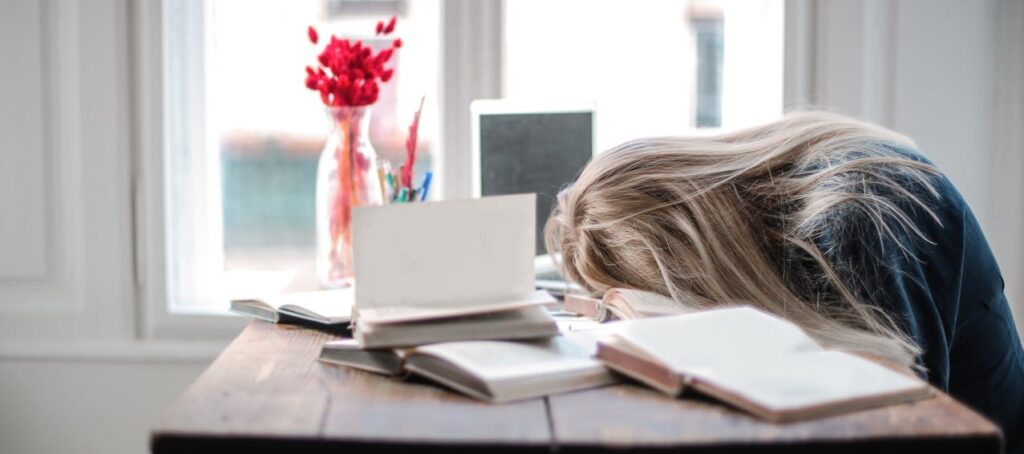By Marie Haaland // SWNS
NEWS COPY W/ VIDEO + INFOGRAPHIC
Two in five Americans will experience “Daylight Saving Scaries” when preparing to change the clocks in November.
The survey of 2,000 Americans revealed that 40% feel a sense of dread when preparing to “fall back,” a feeling that lasts much longer than just the day or two surrounding the time change.
Results revealed this sense of dread sets in about 11 days prior to the changing of clocks — starting around Oct. 23 this year.
And it doesn’t end until about 13 days after the change, which will be Nov. 16.
Commissioned by Avocado Green Mattress and conducted by Talker Research, the survey dug into the “Daylight Saving Scaries” and how respondents feel about changing their clocks.
Regardless of whether they experience the “Daylight Saving Scaries,” 59% of respondents would permanently stop the switch to and from Daylight Saving Time if given the chance.
And older generations were more eager to do so: half of millennials would choose to end the twice-a-year time change, compared to 69% of baby boomers.
Only a third of respondents (35%) believe the trade-off in the fall — an extra hour of sleep for the night, versus less light in the evenings — is worth it.
That might be due in part to the 77% of respondents who feel more energized when the sun is out. But after Daylight Saving Time ends, 70% feel like they start and end their day when it’s dark.
“The sudden shift to shorter days and darker nights throws off our sleep schedules,” said Mark Abrials, CMO at Avocado Green Mattress. “Everyone is a bit cranky, grumpy, moody and lazy.”
Employed respondents (48%) especially miss the daylight — 54% admit experiencing the “sunlight blues” after the time change, as they’re at work during all the hours of daylight.
For employed respondents, 43% also said that the week after Daylight Saving Time ends is their most unproductive at work — with 31% admitting they make more mistakes than is typical.
This includes falling asleep at their desk while typing a letter to the company’s president, showing up late after not changing their clocks the night before and putting salt into their coffee instead of sugar.
About a fifth of respondents said changing the clocks harms their sleep schedule (21%).
Therefore, perhaps it’s no surprise that 37% of respondents need more sleep in the days or weeks after Daylight Saving Time ends, regardless of their employment status.
And for those respondents, they need an extra hour and 24 minutes, in order to feel well-rested.
“The fall time change can be such a struggle,” said Amy Sieman, Affiliate Manager at Avocado Green Mattress. “The early darkness can make us tired early and more prone to be sedentary, skipping out on fun activities and time outdoors.”
Survey methodology:
Talker Research surveyed 2,000 Americans who experience Daylight Saving Time; the survey was commissioned by Avocado Green Mattress and administered and conducted online by Talker Research between Oct. 3–7, 2024.
We are sourcing from a non-probability frame and the two main sources we use are:
- Traditional online access panels — where respondents opt-in to take part in online market research for an incentive
- Programmatic — where respondents are online and are given the option to take part in a survey to receive a virtual incentive usually related to the online activity they are engaging in
Those who did not fit the specified sample were terminated from the survey. As the survey is fielded, dynamic online sampling is used, adjusting targeting to achieve the quotas specified as part of the sampling plan.
Regardless of which sources a respondent came from, they were directed to an Online Survey, where the survey was conducted in English; a link to the questionnaire can be shared upon request. Respondents were awarded points for completing the survey. These points have a small cash-equivalent monetary value.
Cells are only reported on for analysis if they have a minimum of 80 respondents, and statistical significance is calculated at the 95% level. Data is not weighted, but quotas and other parameters are put in place to reach the desired sample.
Interviews are excluded from the final analysis if they failed quality-checking measures. This includes:
- Speeders: Respondents who complete the survey in a time that is quicker than one-third of the median length of interview are disqualified as speeders
- Open ends: All verbatim responses (full open-ended questions as well as other please specify options) are checked for inappropriate or irrelevant text
- Bots: Captcha is enabled on surveys, which allows the research team to identify and disqualify bots
- Duplicates: Survey software has “deduping” based on digital fingerprinting, which ensures nobody is allowed to take the survey more than once
It is worth noting that this survey was only available to individuals with internet access, and the results may not be generalizable to those without internet access.
